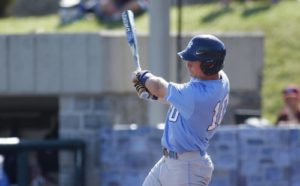
For many years, college baseball was associated with high-scoring contests fueled by aluminum bats that gave average hitters home run power. Times have certainly changed, and that could not be more evident than this year’s College World Series.
After a 1998 season that featured record-highs across the board in offensive categories and a 21-14 for Southern California against Arizona State in the College World Series championship, the NCAA adopted new bat standards to limit the effect of “gorilla ball” in the college game. That year, Division I teams batted .306, averaging 7.12 runs and 1.06 home runs per game.
However, offense surged again from 2008 to 2010, as a result of the emergence of composite bats. Bats that passed the NCAA’s standard to begin their lives improved with use, increasing the national team average for offense to 6.98 runs per game as a result.
A new standard was introduced in 2011, which required college bats to perform similarly to wood bats. The new standard demanded a maximum BBCOR (batted ball coefficient of restitution) of 0.50, which matched the standard for the wood bats used in professional baseball. The results were predictable: Offense in college baseball is lower than it has been since the Ford administration.
In 2012, the Division I batting average was .277, the lowest it had been since 1975. Teams scored 5.38 runs per game and hit 0.48 home runs per game, producing significantly less offense than their previous counterparts. A midseason report on NCAA.com lists the NCAA batting average as .270 as of March 31, 2013. If that mark held, it would be the lowest seasonal average since 1973.
Nowhere is that more evident than at TD Ameritrade Park during the month of June. The College World Series moved to the venue from historic Johnny Rosenblatt Stadium in 2011, the same year as the introduction of the BBCOR standard. While the dimensions of the new home match those of Rosenblatt Stadium following a 2002 reconfiguration, the different location has also helped to limit offense.
At Rosenblatt, home plate was situated in the southwest corner of the stadium, and winds helped carry those aluminum-aided blasts to the colorful outfield bleachers. TD Ameritrade Park’s home plate is in the northwest corner of the property, offering fans a view of the Omaha skyline. As a result, winds are also helping to keep the ball in the park.
Professional scouts love the bat changes, as it has helped them in determining which college hitters have true power and which are merely benefactors of a juiced bat. However, fans have lamented the lack of offense, especially in Omaha with a championship on the line, fearing pitching mistakes are being rewarded by an overly forgiving ballpark.
Trea Turner smashed a ball to left field in NC State’s 2-1 loss to UCLA Tuesday, but the ball died at the warning track, certainly a home run in many other stadiums. On the opposite side of the bracket, Oregon State defeated Indiana 1-0 last night, the first 1-0 game in the College World Series Arkansas defeated South Carolina in 14 innings to open the 1985 edition of the event.
In the last year of Rosenblatt and the old bats, participating teams combined for at least nine runs in eight of the 16 games played. There were six such games in 2011, and four in 2012. Brian Holberton’s home run Tuesday was the 21st College World Series homer at TD Ameritrade Park over three years, considerably fewer than the 32 hit in the 2010 College World Series alone.
Coaches are also looking to liven up the college game, hoping for a better balance of offense and defense in future years. Clemson coach Jack Leggett is leading an effort to change the baseball used in the college ranks. Such a change wouldn’t be as expensive as a bat change and could still offer a boost in offense. The current college ball has higher seams and a lower COR rating, which could be increasing drag during ball flight and decreasing the speed at which the ball leaves the bat.
There’s also a concern that the lower-scoring games could be turning away fans. After all, teams want to play in front of packed stadiums during the regular season. While there were negatives to the offensive onslaughts on the 1990s, 2-1 pitchers’ duels can be a hard sell to college students. An increase in offense could also result in increased popularity for NCAA baseball.
Until such a change occurs (if at all), small ball is the name of the game in Omaha. It has been the key to success for UCLA, a weak-hitting team with strong pitching that has defeated LSU and NC State so far. Either UNC or NC State will be charged with the task of defeating that team twice if they hope to advance to the championship series, and they might have to beat the Bruins at their own game to do it.
SUBSCRIBE TO OUR MAILING LIST
Follow Inside the ACC on Twitter at @InsideTheACC. Like Inside the ACC on Facebook. Get your ACC links at ITA’s Daily NewsLink Page. Talk about ACC sports on the ITA Forums.


